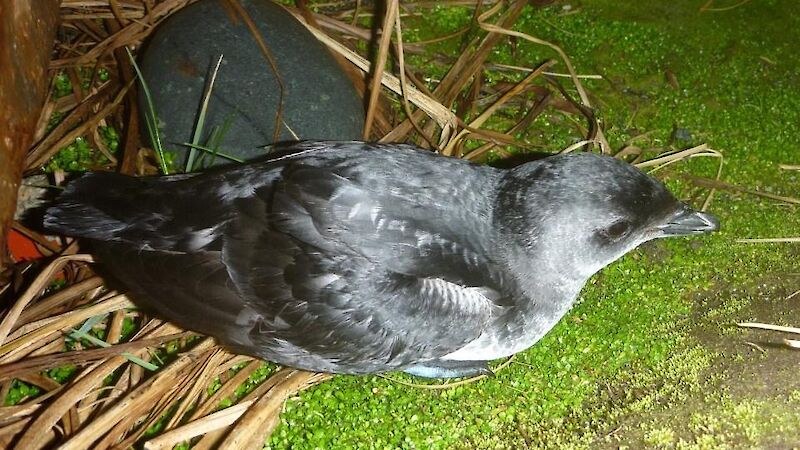Scientific name: Pelecanoides urinatrix
Physical description
Common diving petrels are dark to black above and white below, with short, rounded wings, a stubby black bill, short cobalt-blue feet and legs. The feet and legs of adults become brighter during the breeding season.
Common diving petrels are very similar to the South Georgian diving petrel, and it is almost impossible to separate them at sea.
Distribution and abundance
Common diving petrels have been recorded from waters ranging from the subtropics to the subantarctic, usually between 35° and 55°S. They are widely distributed over southern Australian and New Zealand waters.
The average life expectancy of a common diving petrel is believed to be no more than 3 to 4 years. Swamp Harriers, kelp gulls, skuas and giant petrels take considerable numbers of adults and young each year.
Conservation status: least concern with populations increasing
Breeding
Common diving petrels nest on coastal plains and slopes on cliff edges and behind stable dunes. They nest in burrows or tunnels 25 cm to 150 cm long, 0.2 m to 1.0 m deep and with an entrance 5 cm to 8 cm in diameter.
Diet and feeding
Common diving petrels eat mostly marine crustaceans, particularly euphausiids and copepods while rearing chicks.

